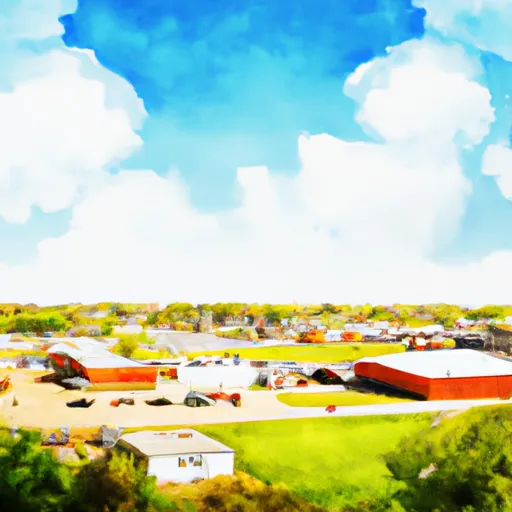°F
°F
mph
Windspeed
%
Humidity











Prairie Farm is a small village located in Barron County, Wisconsin, with a population of approximately 500 residents. The region experiences a continental climate, characterized by warm summers and cold winters. Summers are typically mild and humid, with average temperatures ranging from the mid-60s to low 80s Fahrenheit. Winters, on the other hand, are cold with temperatures often dropping below freezing, and snowfall is common.
The village of Prairie Farm is surrounded by numerous lakes and rivers, making it a haven for water enthusiasts. Lake Montanis and Prairie Lake are two popular bodies of water in the area, offering opportunities for boating, fishing, and swimming during the warmer months. The region's hydrology constituents include the Hay River, which flows through the village, providing additional recreational activities like kayaking and canoeing.
Outdoor enthusiasts can also explore the nearby Blue Hills, a picturesque range of low, rolling mountains. The Blue Hills offer miles of hiking trails, beautiful vistas, and opportunities for hunting during the appropriate seasons. Overall, Prairie Farm provides residents and visitors with a variety of outdoor recreation opportunities to enjoy throughout the year.
Weather Forecast
Prairie-Farm receives approximately 826mm of rain per year, with humidity levels near 84% and air temperatures averaging around 7°C. Prairie-Farm has a plant hardyness factor of 4, meaning plants and agriculture in this region thrive during a short period during spring and early summer. Most plants will die off during the colder winter months.
Regional Streamflow Levels
64
Cubic Feet Per Second
2
Cubic Feet Per Second
2,670
Cubic Feet Per Second
75
Cubic Feet Per Second
Nearby Camping
| Camping Area | Reservations | Toilets | Showers |
|---|---|---|---|
| Lake Sugema County Park | |||
| Lakeview Park - Mexico | |||
| Sever Lake Conservation Area - MDC | |||
| Mark Twain State Park | |||
| Austin County Park | |||
| Bentonsport |



